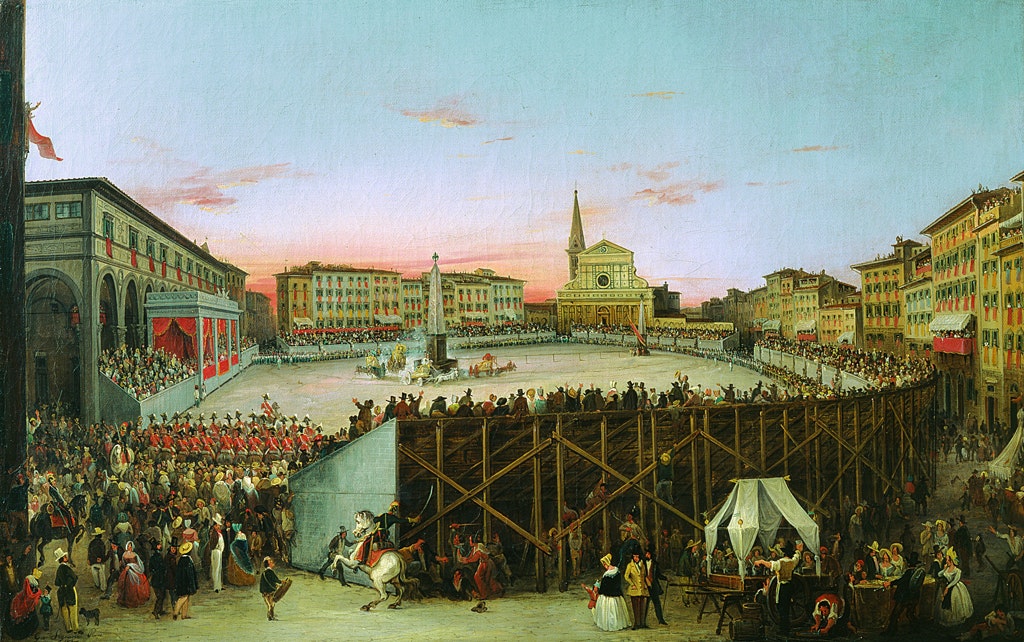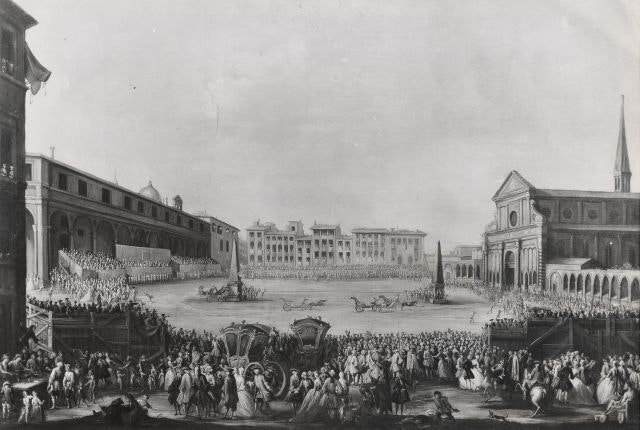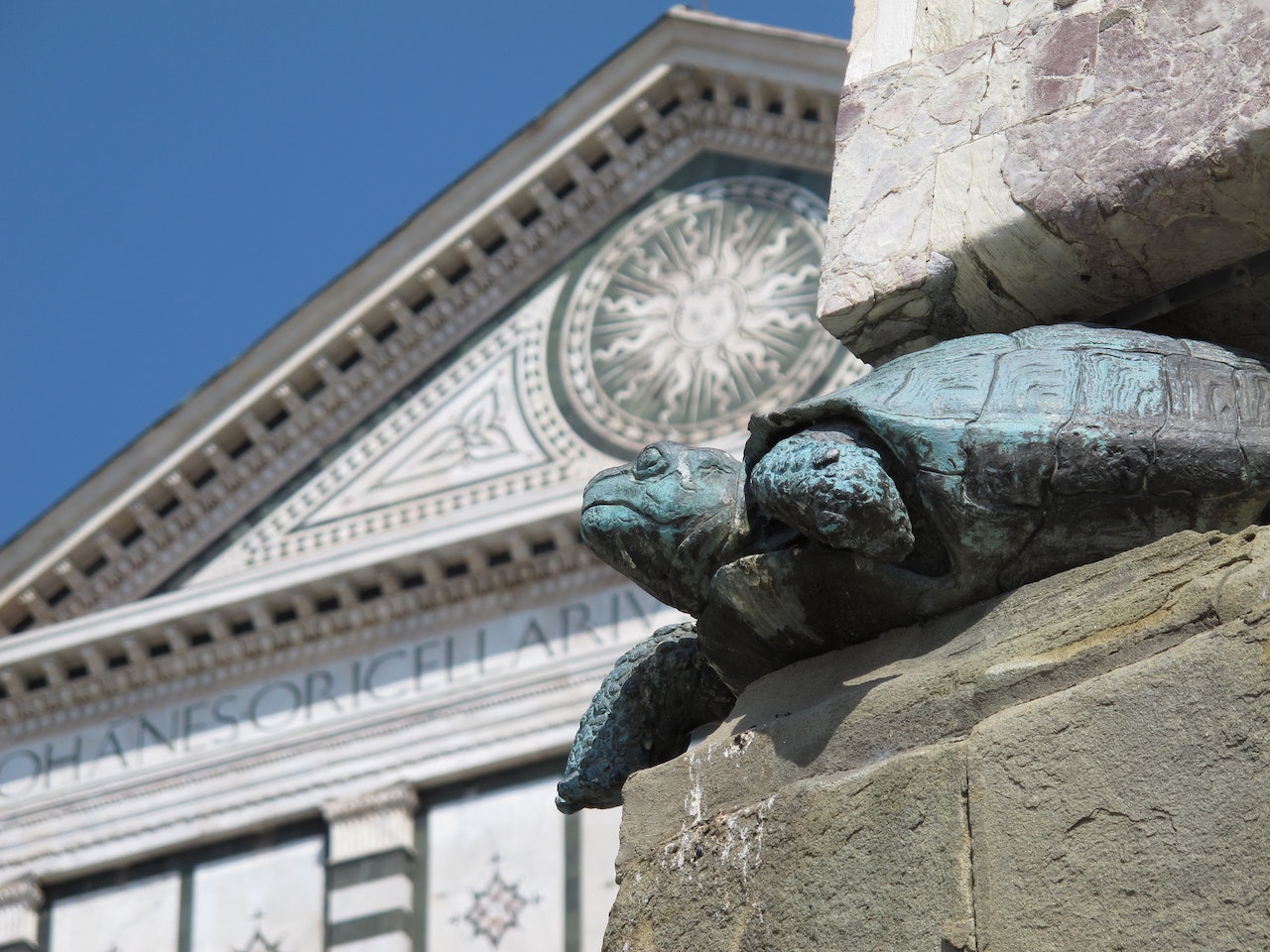The square of Santa Maria Novella was officially inaugurated in 1287 by Decree of the Republic Fiorentina and donated to the homonymous Basilica as its natural extension. The place soon became an important reference for the entire local community and beyond. To accommodate the incoming crowds the City of Florence begun great extension works. In order to gain space they had to demolish several houses located on the same spot.
After the arrival of the Dominicans the square became in fact the scene of crowded religious sermons. Given the importance and the big affluence in Santa Maria Novella, they City of Florence started to celebrate events, games and traditional rides.
The most important amongst these rides was the one so called the “Palio dei Cocchi” (a race with coaches like the Roman chariot), established by Cosimo I in 1563. The carriages (or Cocchi) used to race around two wooden pyramidal structure that bordered the highest points of the track.

Palio dei cocchi or chariot race in Piazza Santa Maria Novella in Florence, 1844, by Giovanni Signorini (1808-1864), Italy 19th Century.
The most important amongst these rides was the one so called the “Palio dei Cocchi” (a race with coaches like the Roman chariot), established by Cosimo I in 1563. The carriages (or Cocchi) used to race around two wooden pyramidal structure that bordered the highest points of the track.
In about 1600, the pyramids were replaced by two marble obelisks supported by four bronze tortoises and built by Giambologna, a well known sculptor of Flemish origin. The game used to be played on June 23th, on St. John the Baptist eve, saint and patron of Florence, a day before the final match of the much celeber Calcio Storico Fiorentino (ancient form of football). The four wooden chariots had four different colors (depending on the district represented): green, blue, red and white, each one pulled by two horses. After three elliptical laps around the pyramids, the race ended. The prize for the winner was a velvet fabric (or drape).

Poli Gherardo, Poli Giuseppe , View of Santa Maria Novella square with Palio dei Cocchi, about 1730-39
The Palio dei Cocchi was an event widely followed until the middle of nineteenth century when the square was crossed by the tracks of the first tramway in town. Today there are still two obelisks to witness a not so distant past and a scarcely known Florence tradition.

One of the turtles made by Giambolgna for the obelisks located in Santa Maria Novella square. Photo Credits: Andrea Boggio